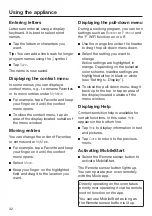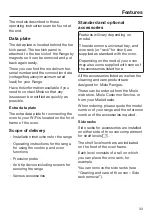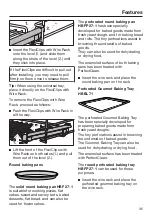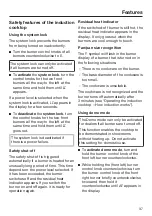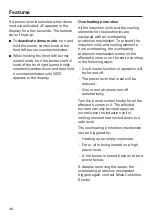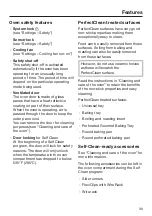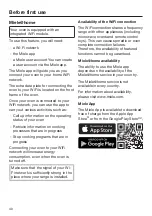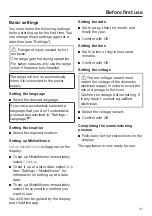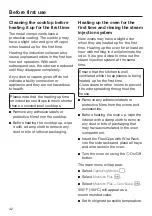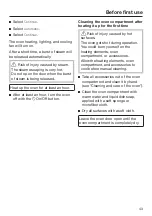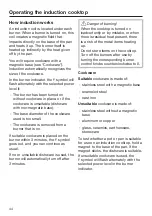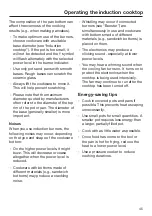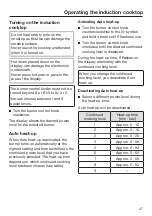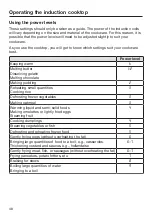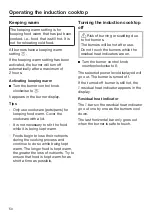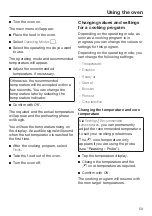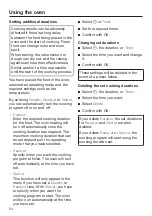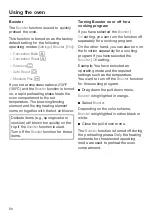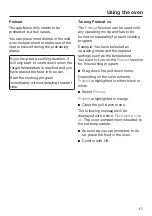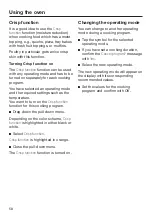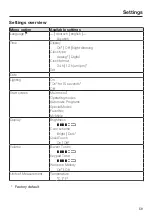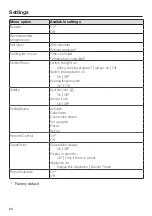
Operating the induction cooktop
45
The composition of the pan bottom can
affect the evenness of the cooking
results (e.g., when making pancakes).
- To make optimum use of the burners,
choose cookware with a suitable
base diameter (see “Induction
cooktop”). If the pot is too small, it
will not be detected and the
symbol
will flash alternately with the selected
power level in the burner indicator.
- Use only pots and pans with smooth
bases. Rough bases can scratch the
ceramic glass.
- Always lift the cookware to move it.
This will help prevent scratching.
- Please note that the maximum
diameter quoted by manufacturers
often refers to the diameter of the top
rim of the pot or pan. The diameter of
the base (generally smaller) is more
important.
Noises
When you use induction burners, the
following noises may occur, depending
on the type and shape of the cookware
bottom:
- On the higher power levels, it might
buzz. This will decrease or cease
altogether when the power level is
reduced.
- Cookware with bottoms made of
different materials (e.g., sandwich
bottoms) may produce a crackling
noise.
- Whistling may occur if connected
burners (see “Booster”) are
simultaneously in use and cookware
with bottoms made of different
materials (e.g., sandwich bottoms) is
placed on them.
- The electronics may produce a
clicking sound, especially at lower
power levels.
- You may hear a whirring sound when
the cooling fan turns on. It turns on to
protect the electronics when the
cooktop is being used intensively.
The fan may continue to run after the
cooktop has been turned off.
Energy-saving tips
- Cook in covered pots and pans if
possible. This prevents heat escaping
unnecessarily.
- Use small pots for small quantities. A
smaller pot requires less energy than
a larger, partially filled pot.
- Cook with as little water as possible.
- Once food has come to the boil or
the pan is hot for frying, reduce the
heat to a lower power level.
- Use a pressure cooker to reduce
cooking durations.


